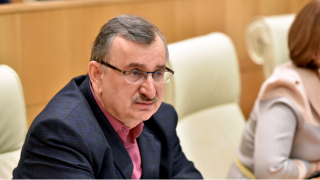Roman Gotsiridze: “Reinvestment accounts for 86% of total foreign direct investment.”
Verdict: FactCheck concludes that Roman Gotsiridze’s statement is TRUE.
GeoStat has released revised figures of foreign direct investment. Whilst the volume of foreign direct investment (FDI) in 2024 rose by 18% following the correction as compared to the initial data, reaching USD 1.6 billion, the aforementioned is still lower than in 2023.
The ratio of FDI to GDP fell by 1.7 percentage points as compared to 2023, standing at 4.6% – the lowest level under the Georgian Dream’s governance, excluding the pandemic year of 2020.
FDI consists of three components: equity capital, reinvestment and debt obligations. Reinvestment has risen sharply since 2020, surpassing the 80% mark three times in the last five years and reaching record high of 86% in 2024.
Investments decreased both in absolute terms and relative to the GDP in 2024. Structurally, the share of new investment has declined. The downturn began in 2023 and has continued through the first quarter of 2025 (data for the second quarter of 2025 has not yet been published as of August). Considering the factual accuracy and the ongoing trend, FactCheck concludes that Roman Gotsiridze’s statement is TRUE.
Analysis
Member of the tenth Convocation Parliament, Roman Gotsiridze posted on social media, commenting on investments: “Virtually no new capital entered the country in 2024, according to the revised foreign direct investment data. Reinvestment accounts for 86% of investments – profits returned by local companies. The total investment volume fell by 18% as compared to 2023.”
Georgia received USD 1.6 billion in FDI in 2024 according to GeoStat’s updated figures. This is 18% higher than the preliminary data published in March but still 18% lower than in 2023. The agency explained the USD 235 million discrepancy between initial and corrected figures by adjustments in reinvestment and loan volumes. Indicators for 2020-2023 were also revised within a 1.3%-2.2% range.
Graph 1: Foreign Direct Investment in 2024 (USD Million)
Source: National Statistics Office of Georgia
Data for all four quarters were revised. The smallest revision was in the fourth quarter, up by 9%, whilst the largest was in the third quarter, recording a rise of 33%. Despite the sharp increase after corrections, the total FDI volume in 2024 remains below the levels of both 2022-2023 and 2014-2017. Moreover, when measured as a share of the GDP, the 2024 figure is the lowest recorded under the Georgian Dream’s governance, excluding the pandemic year of 2020.
Graph 2: Foreign Direct Investment
Source: National Statistics Office of Georgia
By components, foreign direct investment is divided into three parts: equity capital, reinvestment and debt obligations. Georgia adopted the Estonian model of profit taxation in 2017, exempting reinvested profits from tax. Reinvestment accounted for an average of 37% between 2017 and 2019 – double the share recorded in 2013-2016. The reinvestment rate rose sharply again from 2020 onward, surpassing the 80% threshold three times in the past five years and exceeding 85% in 2024.
Graph 3: Foreign Direct Investment (USD Million) by Components
Source: National Statistics Office of Georgia
Whilst the fact that investors leave profits in the company (reinvestment) is positive, new investment is even more important. Debt obligations substantially reduced new investments in 2023-2024, bringing the share of total FDI down initially to 17% and then to 14%. The situation did not improve in the first quarter of 2025. FDI fell by 25% as compared to the same period last year – from USD 245 million to USD 184 million – with reinvestment accounting for 84% of the total.
FactCheck cannot assert the reasons for the decline with certainty. Past periods show that FDI volumes often correlate with the completion of active investment phases in specific projects such as the Baku-Tbilisi-Ceyhan oil pipeline, the southern Shah Deniz gas pipeline and its subsequent expansion and the Baku-Tbilisi-Kars railway.
\Whatever the reason for the decline may be, the fact remains that FDI fell both in absolute terms and as a share of the GDP in 2024. The share of new investments in total FDI declined even more. The downward trend began in 2023 and continued into the first quarter of 2025. Considering the factual accuracy and the ongoing trend, FactCheck concludes that Roman Gotsiridze’s statement is TRUE.








